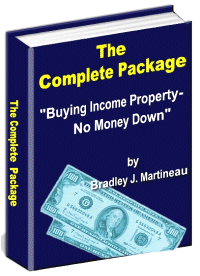The transaction
Writing a mortgage generates one-time fees for providing the lending or
brokering service.
Interest charges
The holder of the mortgage charges interest based upon the terms of the
mortgage.
Collecting payments
Because mortgages are commonly sold to investors, and most investors wish to
collect interest on their money without having to collect payments from
borrowers, mortgage servicing companies collect the payment on behalf of the
investor for a fee.
As loans are funded by banks and mortgage banks, they are either held in the
lender’s portfolio or they are packaged and sold in the secondary mortgage
market. At this point, the mortgage begins to be pulled apart into its pieces –
the lender retains the transaction income, sells the principal balance of your
loan to another party who collects the interest, and sells the right ot collect
the payments. By selling loans in the secondary market, lenders are able to
replenish the funds necessary to originate additional mortgage loans.
The secondary mortgage market provides the great majority of funds that make
mortgages possible. Mortgages sold in the secondary market are generally
referred to as wither agency or nonagency loans.
Agency loans are those loans that are underwritten to standards created by the
formerly government-sponsored – and now government-owned – entities such as
Fannie Mae or Freddie Mac. These loans are also commonly called conforming
loans, because they conform to agency standards. Conforming loans are sold by
lenders to the agencies, who in turn pool the loans and offer them for sale to
investors, either directly or through brokerage houses on Wall Street. Agencies
play a vital role in the nations’ housing finance system by providing liquidity
for lending operations in a variety of economic conditions.
While the housing meltdown led to a government takeover of these agencies, they
Have always been quasi-government entities. This is because the government steps
in, when necessary, to ensure adequate liquidity exists in the financial system
to fund mortgage loans. These agencies will likely continue to exist, in one
form or another, as the economy takes shape in the years to come.
Nonagency loans are simply loans that do not conform to agency standards. These
loans are made to underwriting standards that are acceptable to an investor, or
are appropriate for the loan portfolio of a lending institution, such as a bank.
The most commonly recognized nonagency loan is the jumbo loan, which is larger
than the maximum loan size an agency will accept. In recent years, the most
famous (or infamous) type of nonagency loan has been the subprime loan.
Nonagency loans are most often sold to investors via brokerage houses on Wall
Street. Examples of these types of loans are stated-income loans, option ARMs
(or pick-a-pay loans), and a variety of other loan products that no longer exist
and – as you will discover if you haven’t already – were the seeds that gave
rise to the foreclosure harvest.
The range of nonagency mortgage products available at any time is dependent upon
general economic conditions, the health of the housing market, and the appetite
of investors for instruments that are backed by mortgages. Beginning in 2007,
degradation in each of these factors gave rise to an ever-shrinking pool of
funds available to write mortgages. As the housing crisis continued to form, the
liquidity continued to tighten. This tightening is a natural part of the
economic cycle.
Investors of agency and nonagency loans include, but are not limited to,
insurance companies, pension funds, commercial banks, fund managers, foreign
banks, and other financial institutions.
In summary, consumers deal with intermediaries, such as brothers, or directly
with lenders, who sell their loans to agencies or Wall Street – who in turn
package the loans for sale to investors.
Do you own real estate articles or stories and want to share with other investors?
You have chance to win
$100 Amazon Gift Certificates. We will give
away 3 prizes for top authors each month!
Email your articles or stories to:
articles@buyincomeproperties.com
© Copyright 2001 - 2010 by
BuyIncomeProperties.com

Visit
Real Estate Forums
for every real estate investing topics!
Enter Here
Top of Page

